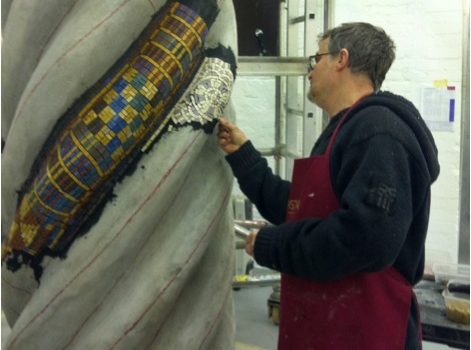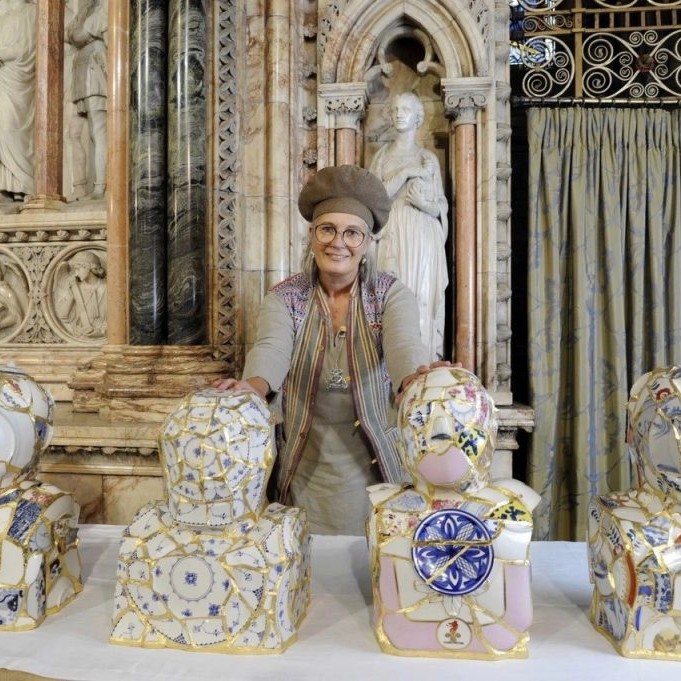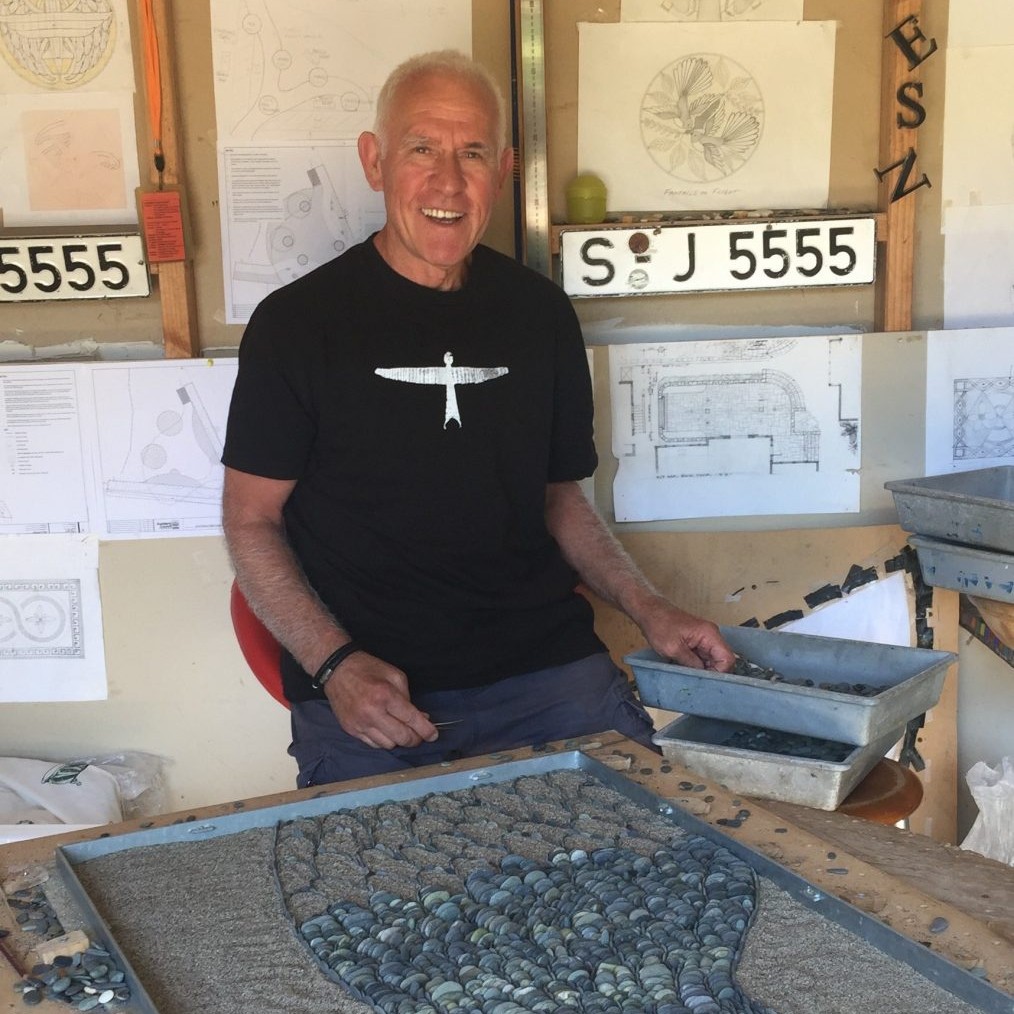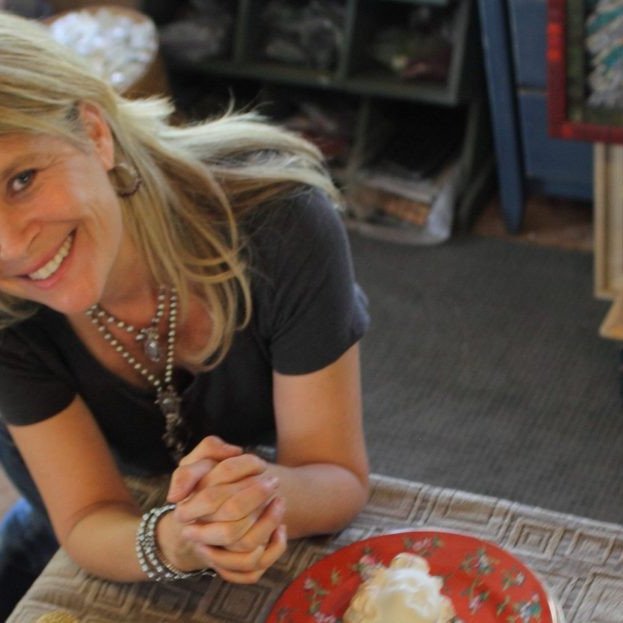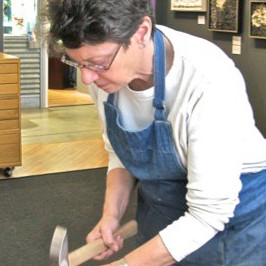Gary Drostle Mosaic Artist - London, UK.
How did you come to work in this particular medium?
After leaving Art College in 1984 I knew I wanted to work outside the gallery system, in public spaces, this was for me a rejection of what seemed a narrow and elitist system. I began to paint murals, but working outside on the street is a much harsher environment than a gallery and issues of durability and lightfastness became important issues. When I discovered mosaic art in 1990 this immediately solved those problems. I hunted for all the information I could find about most and basically taught myself from books to undertake my first mosaic commission. Initially I continued to work as a mural painter whose medium was mosaic but increasingly, as I have used and explored the medium of mosaic further, the medium of mosaic has gripped me and drawn me in. Mosaic has so much more to offer than the simple translation of a painting, it contains a beautiful and mesmerizing world full of patterns, textures, light, pure colour, expressive use of cutting and laying, the cohesion and breaking apart of the image… So much more to yet discover.
Discuss the different techniques that are required for mosaic. The distinction is not really about 2D or 3D but about flat mosaics verses not flat mosaics.
All floor mosaics need to be flat, and sometimes wall or panel mosaic are wanted flat too. The technique I used to achieve a flat surface is known as the paper-faced indirect technique. This process really begins with the cartoon, a full size drawing of the design on paper – however the design is drawn in lateral inversion (mirror image). Once this is prepared the mosaic tesserae are cut by hand and individually glued faced down onto the paper design using a simple flour and water paste. The mosaic is constructed in this way, if it is large it is cut between the tesserae into manageable sections as it is completed. Once the whole mosaic is complete it is transported to the site where it is flipped upside down and placed into fresh cement on the floor or wall. The paper, now on the top, is then damped, releasing the glue. The paper is then removed and the mosaic is left bedded in the cement. It just remains then for the mosaic to be grouted and cleaned.
This is a great technique for making mosaics, allowing construction in the comfort of the studio at any time of the year.
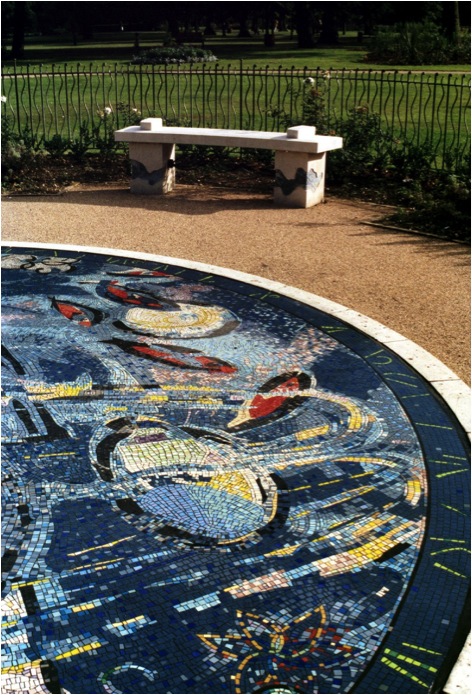
The technique used for 3D and for 2D mosaics that one wishes to have texture is the traditional direct method. Nothing could be simpler than pushing the tesserae directly into the setting mortar. It is the essence of pure mosaic making, giving ultimate control of texture and light on the work and allowing the artist to express the physical nature of mosaic directly with the hand. It is a beautiful way to work in mosaic.
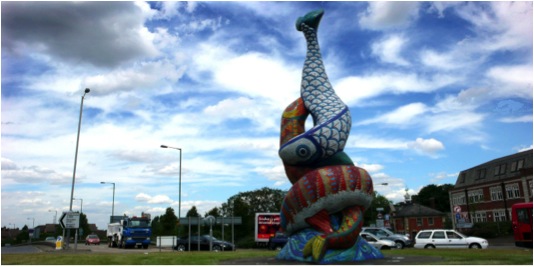
It was through your work, ‘The River Life’ that I became aware of your mosaic work. Can you discuss the meaning behind the work, how long it took to lay and the number of people involved in the project?
The River of Life mosaic was probably my favorite work to date, perhaps particularly because the client, The University of Iowa, really showed great trust in me to create a work that I believed would work best. A committee that is willing to have faith in its appointed artist is unfortunately very rare, but I do believe that giving the appointed artist freedom to create the best they can is the way to get the best work and Iowa University was such a client.
Like most of my public, site specific commissions the starting point for this project was the site itself. I began looking at the function of the building, the campus health and fitness center, and its philosophy of Wellbeing. Then I looked further out and the terrible floods in Iowa City that instigated the building of the new center, and the meandering river itself, then to the communities around it and in particular to their textiles, the Amish quilt making and the First Nation Iowa people and their textiles, also the basket weavers of the local area.
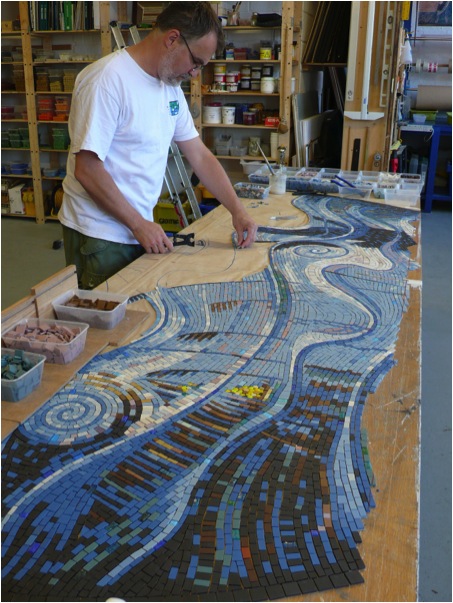
When it came to drawing all this information together it began as a struggle but then there was one of those eureka moments (as I sat staring at an aerial picture of the Iowa River) when everything just fell into place. For me the River of Life sums up these diverse ideas all together with so much more. I imagined the source of the river being birth, with the life lines of people’s lives running along the river as individual courses of tesserae. The pattern fields of the surrounding countryside formed the background through which the river flowed, made up of those textile patterns. The central golden section of the patterns represented Wellbeing, a life in balance, whilst the grey outer sections represented life out of balance. The life lines of the river tracing their way through, sometimes bursting its banks as some lives go ‘off the rails’. It all fitted together beautifully.
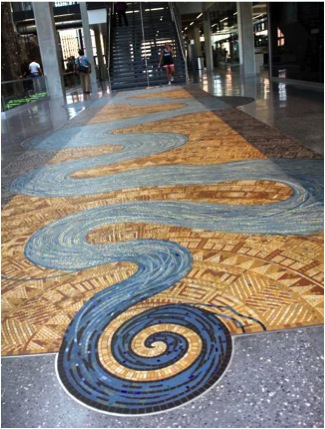
As this was a large mosaic I needed help to construct it. I worked with a varying team of about five at any one time during the six months construction using the indirect paper face technique in my London studio. For the installation I and one other came from London and we were joined by two US mosaic makers to install the work over the course of two weeks.
For me this project was a great success as it worked on so many levels from the design to the technical and most importantly the functional success of the work for those who use the center.
Can you discuss one of your earlier works and the importance it has played in your career?
When I think of past mosaic works that may have marked changes in my work two pieces spring to mind, the Sunburst mosaic for Islington in North London and the Fishpond mosaic for Southampton East Park.

The Sunburst Mosaic was my first mosaic. It was commissioned by Islington Council and was basically an extension to an earlier painted mural commission to the extensive underpass network. Islington Council showed great trust in allowing myself and my colleague for that commission, Ruth Priestley, to create a mosaic based purely on our painted commissions. We made the vitreous glass mosaic in the attic of my father’s house using the paper faced method, it was a huge learning experience and set us both off on a new voyage of discovery and love for mosaic art.
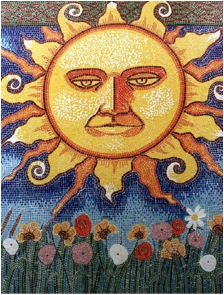
The mosaic for Southampton East Park was commissioned in 2005 and was significant for me for one particular reason. The commission through a landscape architect was to make a 9 meter diameter mosaic which was to be designed by another artist, Caroline Ishghar. The commission came at a point when I was working with artist Rob Turner and our studio was doing well, we were confident of our design, fabrication and installation of our own mosaics.
When the design for Southampton arrived in the studio it was a small loose painting, unlike our designs to that point it paid no heed to the palette of available colours or any ideas of classical andamento – this was a big challenge but the process of translating the design into mosaic made me realize how much more was possible in the medium and it became realization of a new freedom in creating mosaics offering a greater freedom for future designs.
Can you explain the logistics needed to produce ‘Entwined Histories’?
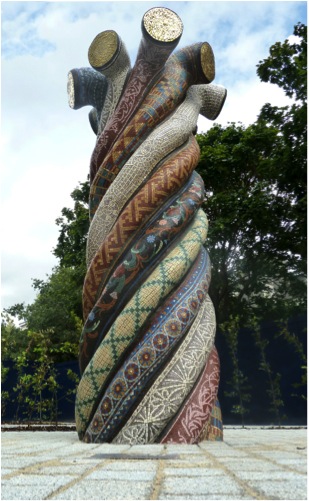
The ‘Entwined Histories’ mosaic sculpture was commissioned by Poplar HARCA, a public housing developer in east London.

For me this commission was great fun and I hope a good example of how site, history, creativity and community can come together to realize an artwork that is truly site specific. As always the commission began with research into the local areas history, in this case picking up on the fact that the area was the former site of the major rope makers for the London Docks. The other factor that was important about the local area today was the large Bangladeshi community. This area of London, because of its proximity to the docks and correspondingly its large stock of poor housing, has always been a focus for migrant communities coming to London dating back many centuries including the French Huguenots, Irish Weavers, Chinese Sailors and Ashkenazi Jews. These communities settled in east London and made it their home, many often working in the textile industry. This of course sparked links to the earlier River of Life project. So I designed this large rope form, with each strand of the rope representing a different community in the area using a textile pattern associated with that community. I saw this as a perfect expression of how the larger community worked, each through its own strand keeping its identity but all binding, uniting to form a stronger whole – I was happy with this positive view of our multi-cultural neighborhoods. At the top of the sculpture the strands turn out to the world revealing a golden interior, I saw this as the result of the nurturing community enabling its members to grow and aspire to greater things.
Making a sculpture like this is always a challenge. I carved the polystyrene form around a stainless steel frame and then coated it with glass reinforced concrete. Once this was dry the mosaic process began, working directly onto the form the tesserae were cut and stuck to the sculpture. Once the mosaic work was finished the sculpture was grouted and cleaned. The sculpture included a lifting hook in the top and a fixing plate on the base allowing it to be hoisted out of the studio, transported to the site bolted into place.
Discuss the importance of the Mosaic Arts International exhibition to your career?
SAMA’s annual Mosaic Arts International exhibition is significant for me because it is the only regular juried mosaic exhibition that has recognized the importance and value of architectural mosaics, which after all is really the essence and birthplace of mosaic art. They do this by allowing photographic entry into their juried exhibition. I am extremely grateful to SAMA for their commitment to architectural mosaics in this way and am very proud that my work has been selected for many of their exhibitions – really it is the only opportunity for me to showcase my work to a larger audience and also to my peers. One of the great things about the world of mosaic art is the very open and supportive nature of mosaic artists, it is a friendly and passionate community.
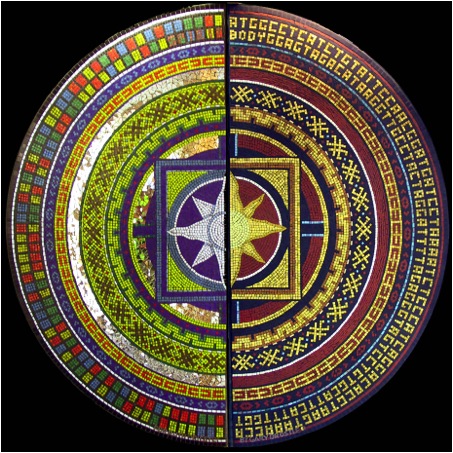
Explain the overlapping of your work in modern London and the Roman mosaics found throughout the UK?
The Romans were the greatest exponents of mosaic art and there have been over a thousand Roman mosaic floors found in Britain alone. Obviously as a modern mosaic maker I am very aware of our Roman heritage and greatly admire these works. The Romans have a lot to teach us about mosaic making, in particular I admire the economy of their work, the way in which they balance the amount of labor, the detail of design and the cutting of the tesserae. As well as trying to use this knowledge in creating my own mosaics I have referenced Roman mosaics as part of acknowledging the history of a specific site and even just created Roman style mosaics for specific commissions such as those for Chester’s Roman Gardens which were realized in close co-operation with the city’s archaeologists.
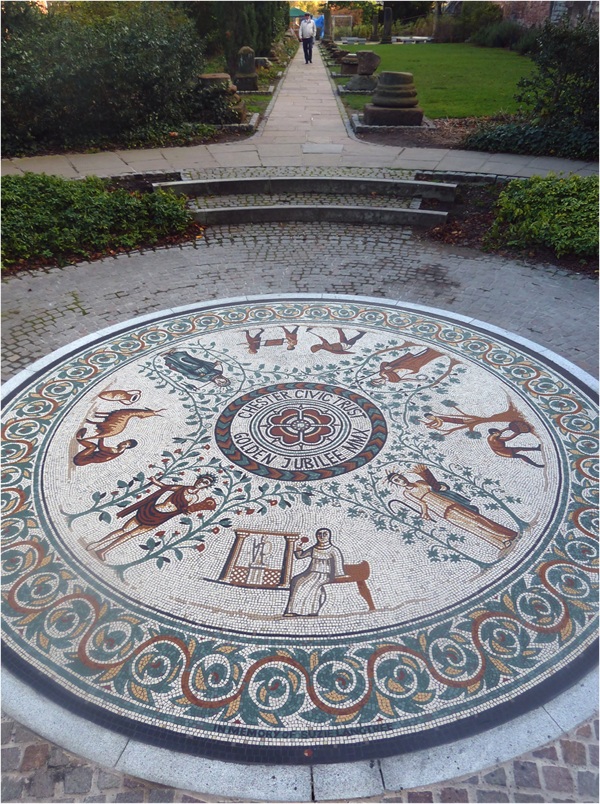
‘Woolwich’ has a very personal association for you. Please discuss this?
I was born in Woolwich and have lived there most of my life, indeed I would still be there if it had not been for the loss of my family flat to the recent riots, which was quite a tragedy forcing me to move out of the area. I have a great affection for this unique corner of London. Woolwich has always been a poor working class area, far from the glamour of central London, but it has an amazing history and some wonderful architecture combined with a great multi-cultural community, the whole world is in Woolwich and I feel it keeps me grounded. It is home…
Expand on your personal thoughts about the importance of public art in contemporary life?
For me pubic art is about democracy, it’s about seeing art as a part of all our lives, it’s about seeing all the arts as a vital part of humanity and civilization – we are here not just to work and survive, life is actually about love and play of which art is an essential part. Unfortunately, like much of life now, art is being ‘privatized’, a commodity to be traded, something reserved just for those who can afford it. Genuine public art is the antithesis of the arts combined, it is site specific so cannot be traded, it is open to all. I’m not saying that only public art is worthwhile, far from it, all the arts, painting, sculpture, music, dance, drama, they are all vital. I would like to see a future where art is more prevalent than advertising on our streets, art that fills our world. The problem with public art at the moment is that it is too precious, because of its rarity, and this preciousness leads to over caution. Like the rest of life there is also a battle going on in ‘public art’ as corporate ‘public’ art threatens to replace art generated from communities.
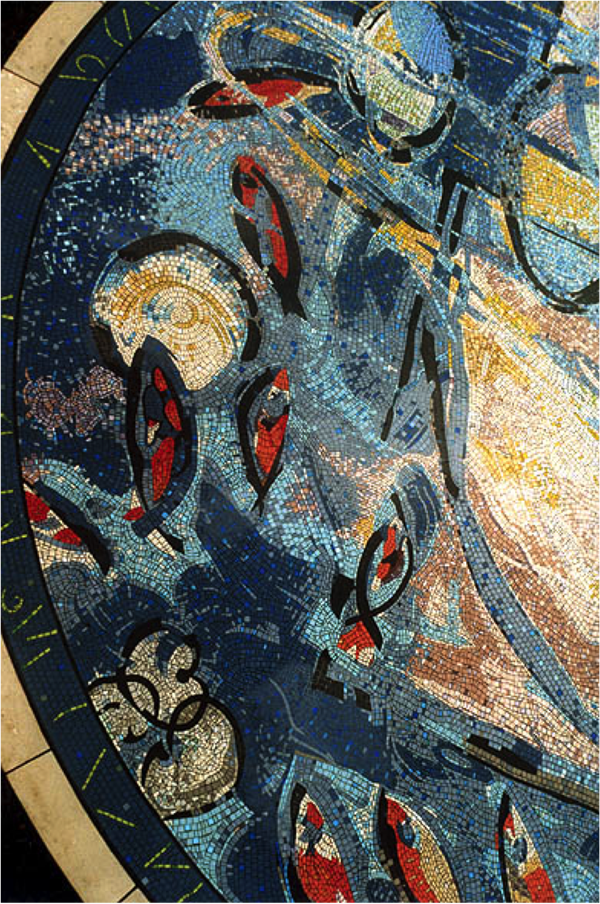
Contact details.
Website:www.drostle.com
Email:gary@drostle.com
Gary Drostle, Central London, England
Interview by Deborah Blakeley, September, 2014
Think a colleague or friend could benefit from this interview?
Knowledge is one of the biggest assets in any business. So why not forward this on to your friends and colleagues so they too can start taking advantage of the insightful information the artist has given?
Other artists you may be interested in:


